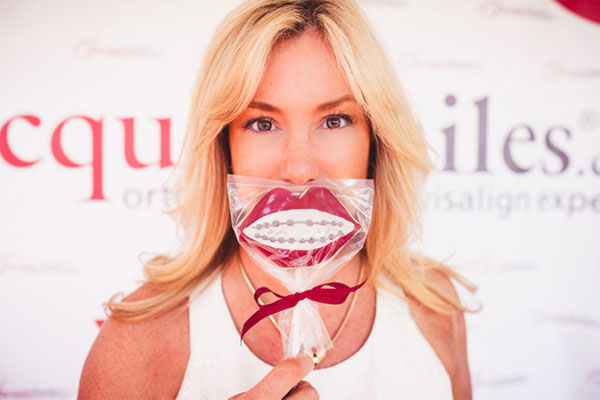The American Association of Orthodontists recommends that everyone by 7 years of age should get evaluated by an orthodontist. This includes if your child is being followed by a pediatric dentist because orthodontists specialize in dentofacial orthopedics or growth and development of the face, in addition to the malposition or crowding and spacing issues of the teeth.
Why so young? âThere are many reasons and a lot of research which reveals that early orthodontic intervention aids in dental and skeletal prevention, said Dr. Jacqueline Fulop-Goodling (a.k.a. Dr. Jacquie), an orthodontist with offices in Woodbury and Manhattan. “Many orthodontic problems can be corrected prior to the eruption of all of the adult teeth. Most children complete their dental growth by age 12 and many children even earlier because kids today are developing quicker because of the hormones in the foods that they eat, †said Dr. Jacquie. At age 7, most children’s first molars have erupted, in addition to some front teeth. At this stage, a panoramic x-ray is taken to reveal the size of the other permanent teeth, which have not yet erupted. If crowding issues exist, appliances like a palatal expander can be prescribed to make the mouth bigger for the unerupted crowded teeth seen on the x-ray. Most importantly,Dr Jacquie said, The increase in frequency of palatal expanders today and early orthodontic intervention have decreased the need for extraction of permanent teeth. That’s amazing!
Studies have shown that younger children are more comfortable during the expansion phase of the expander, as once puberty is near by, the discomfort level increases because the palate has a growth plate like suture fusing into one piece. (Post pubertal children and adults requiring a palatal expander must have surgery first since their palate has already fused into one piece.) Also, the more permanent teeth a child has can cause more discomfort due to the overall greater orthodontic forces necessary to be exerted because a child has more teeth in their mouth.
According to www.dentistry.com An orthodontist can generally determine whether there will be adequate room for the remaining permanent teeth at this time. This determination is often aided by a panoramic X-ray. If there will not be adequate room for the permanent teeth, early treatment can be initiated and may consist of appliances to expand the jaws or the early removal of deciduous teeth. This approach greatly increases the chance that the remaining permanent teeth will erupt ideally aligned, thereby reducing the need for future orthodontic treatment. A commonly treated orthodontic problem is an overbite (more correctly termed overjet), or “buck teeth.†An overbite may result when the upper jaw grows more rapidly than the lower jaw, or may simply result from protrusive front teeth. If the jaw is involved, treatment will usually consist of an orthopedic appliance to help stimulate lower jaw growth. In addition, limited upper braces are often placed on the front teeth. The advantages of treating the overbite early include improved chewing, speech and facial aesthetics, increased self-esteem and reduced risk of dental injuries. Finally, orthodontists generally recommend treating harmful habits such as thumb sucking, tongue thrusting, and mouth breathing at a young age. There is strong evidence that these habits can lead to significant orthodontic problems.
Dr. Jacquie said, Early intervention is a key factor in determining what your childs future smile will look like. It is wonderful to create wide smiles and can avoid pulling adult teeth because we are ableto evaluate children younger today.


